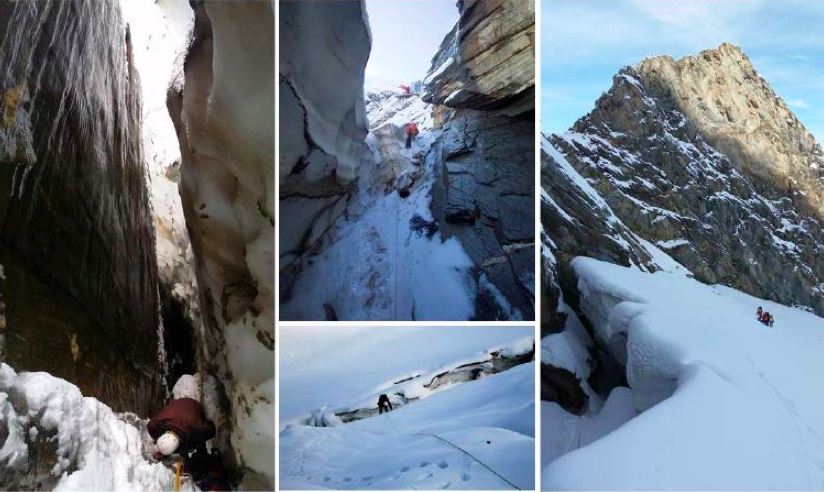
The selected randkluft behind the Schmiedingerkees glacier (Kitzsteinhorn).
Candidate: Open
Supervisors: Kerry Leith, Ingo Hartmeyer, Markus Keuschnig
Institution: ETH Zurich, GEORESEARCH Forschungsgesellschaft mbH
Activity: Beginning Fall 2018
Since 1880 mean annual air temperatures in Austria have risen by 2 °C, more than twice the average global warming of 0.85 °C. Glacier retreat has evolved into one of the most visible consequences of this climatic change in alpine regions. While research has often focused on the effects of melting glaciers on their forefields, interactions between diminishing accumulation zones and oversteepened headwalls have received little attention. Recent findings of a four-year terrestrial laserscanning campaign (2011-2015) monitoring glacial headwalls on or in the area of the Kitzsteinhorn (3.203 m a.s.l.), Hohe Tauern Range, Austria, show the dramatic impact of glacier thinning on adjacent headwalls: 80 % of the detected rockfall volumes were triggered from areas located less than 20 m above the current surface of the adjacent, rapidly thinning Schmiedingerkees cirque glacier. Based on existing, and newly acquired monitoring data, this MSc project will gain first insights into rockfall preconditioning in randklufts and related geomorphological shaping of glacier headwalls.

Recent Comments